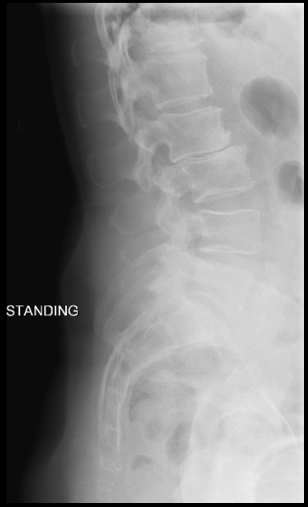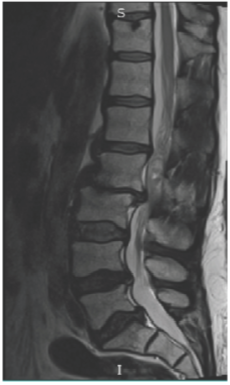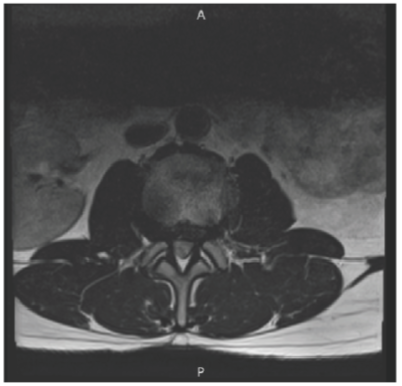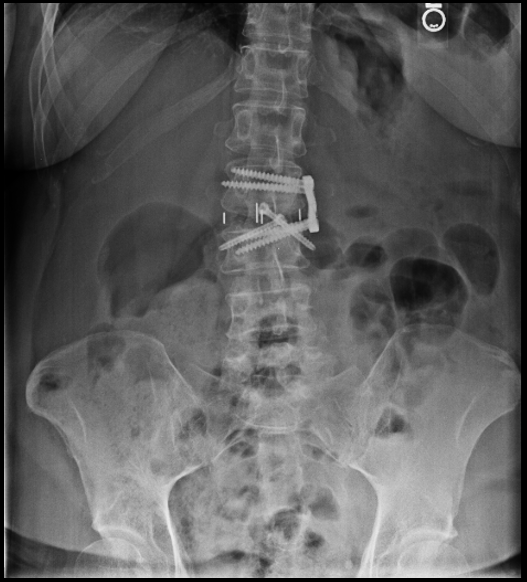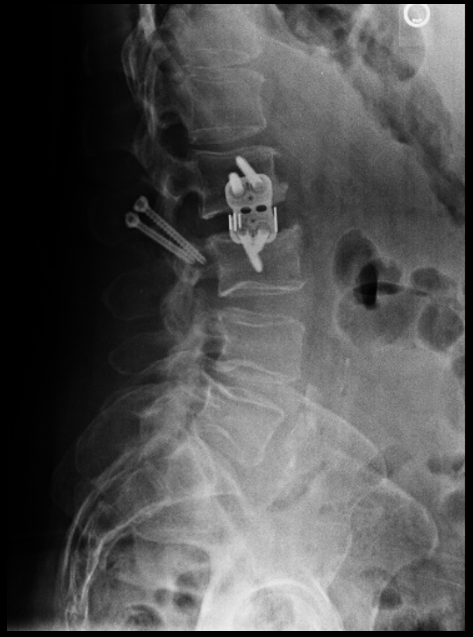An oblique approach to the spine involves a 2 to 3 inch incision on the left side of the flank. This approach is muscles splitting and does not damage muscles during its approach. Similar to the lateral lumbar fusion (LLIF), it provides access to the disc space from the side. Different from the LLIF or XLIF, it does not damage the hip flexor muscle aka the psoas muscle.
The OLIF approach provides a minimally invasive, muscle preserving approach to the spine. It affords the ability to place a large implant to span the disc space, allowing for increased surface area for bone fusion and increased stability.
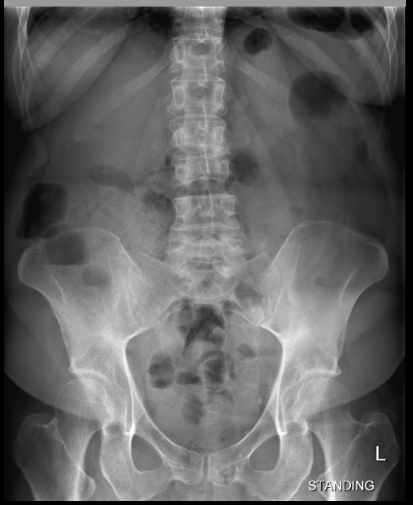
Pre-Operative AP Xray Lumbar Spine – L2-3 Degenerative Disc Disease 
Pre-Operative Lateral Xray Lumbar Spine – L2-3 Degenerative Disc Disease 
Pre-Operative MRI Lumbar Spine 
Pre-Operative MRI Lumbar Spine 
Post-Operative AP Xray Lumbar Spine – L2-3 Degenerative Disc Disease 
Post-Operative Lateral Xray Lumbar Spine – L2-3 Degenerative Disc Disease
How an Oblique Lateral Interbody Fusion (OLIF) is Performed
For the procedure, the patient is given anesthesia and placed on their side on the operating table. Using intra-operative X-ray for guidance and planning, the surgeon lines up the incision directly over the target level. Once in position, the surgeon makes a very small incision on the patient’s side and spreads down to the level of the spine. With the assistance of an X-ray image, the correct level is identified, and a small stiff wire placed into the disc. Over this wire, a series of progressively wider tubes are placed until eventually a 1 inch working portal is established. The final working tube extends from the skin down the spine, protecting surrounding structures while the disc work is performed. With lighted instruments designed specifically for this approach, the disc material can be carefully and completely removed.

To restore the height of the disc space and provide stability, an implant is chosen that fills the intervertebral space – width, depth, and height. The implant may be made of either a hard plastic or titanium. Typically, they are held in place by either screws or blades that secure the implant to the vertebra on either side.
There are times when restoration of vertebral height and elimination of painful motion can be accomplished via the placement of this implant alone. This is called a “stand-alone” approach.
However, many patients will need further decompression of the nerve roots performed posteriorly via a laminectomy or laminotomy. Also, when instability of the spine was a concern, additional fixation with pedicle screws may be needed to hold the spine tighter to ensure a solid fusion of bone occurs.
Once the surgeon is satisfied with the position and stability of the implants, the retractors and instruments are removed and the incision is closed with self-resorbing sutures.
Most patients will spend 1 to 3 nights in the hospital after a lumbar fusion. As the bone is healing together, it is important to avoid overstressing the low back. Thus, avoiding excessive bending, twisting, and lifting is paramount. We will closely follow the healing of the bone with xrays. Over time, we will watch the bone heal across the two vertebrae.
Benefits of Minimally Invasive OLIF
Compared to traditional open fusion techniques, OLIF offers numerous advantages to the patient. Some of the possible benefits include:
- No repositioning of the patient during surgery
- Shorter procedure time
- No muscle or soft tissue cutting
- Decreased risk of nerve damage
- Decreased bleeding risk
- No need to remove facet bones because of how the surgeon approaches the spine through the created space.
- Less risk of blood clots
- Quicker hospital discharge, which in turn can help reduce patient costs
- Quicker recovery time
The oblique approach may not be appropriate for patients with prior extensive abdominal surgery, larger body types, or those with unusual vascular or intra-abdominal anatomy. Appreciating unique patient factors are part of the tailoring process in deciding which approach is best fitted for each patient.
For more information about the treatment options for low back and leg pain, reach out to Dr. Jackman and his care team today.

